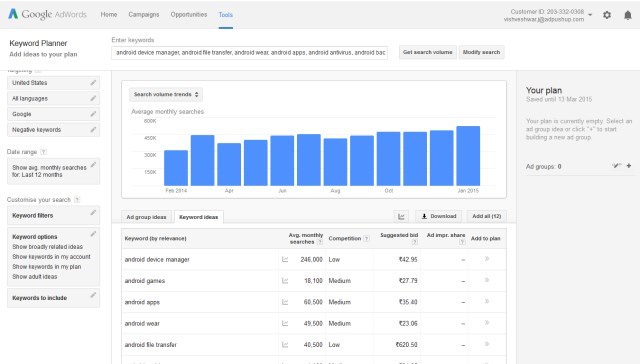Plenty of websites struggle with getting traffic, especially when they’re new. Here are 10 ways using which you can easily increase website traffic.
User traffic is the currency of the Internet. High page views directly translate to more lead generation, increased sales, and greater influence within your industry. So then, how to drive traffic to your website traffic?
One way to do it is to buy traffic directly from ad networks. But that’s not a particularly smart or sustainable strategy. It’s because spending money for every visitor coming to your website is a way expensive move in the long run. A better strategy is to create content that users will likely share or content that users are already searching for (i.e., organic SEO traffic).
How To Drive Traffic to Your Website?
Multiple factors are considered when it comes to getting the hang of the question, “how to drive traffic to your website”. And multiple tactics and methodologies are set forth. In this blog, we will delve deeper into some of them. Without further ado, let’s take a look at some of them.
And the only way you can do this is by having a blog.
So many businesses ponder over this question: Should our website have a blog? The short answer is yes. The long answer is ‘absolutely’. Assuming you already have a blog up and running or that you’ve just set it up, here’s what you need to do to start driving traffic to it:
1. Go Niche-Specefic
One of the most effective ways to drive traffic to your website is by becoming niche-specific. Not only is it beneficial for the growth of your website, but it also builds the factor of trust and credibility among the audience.
Instead, try to keep it focused on your business or a specific theme.

For an example of a website that successfully captured a niche, look at Freshome. It’s not that there aren’t any other architecture and design-related websites on the internet.
Still, Freshome has made itself the most visible through its relentless drive to find and feature the best design-related content. Started in 2007, it has now come a long way now. They now have 166k+ followers on Twitter. Not only Twitter, but they have an abundance of followers on many social media platforms.
By catering to a niche, you’re basically making a statement that says, “I’m great on this subject and you would do well by listening to me.”‘
People buy into this perception.
2. Decide Your Target Audience
Before pondering how to drive traffic to your website, figure out your target audience exactly.
If you are creating a piece of content that you plan to promote in some way (your website, your blog, social network, your paid advertising etc.), then you must know who you are creating it for. Sales copy that works well for teenagers may not work well for people of retirement age.
If your article is written for teenagers, they won’t appreciate it if you start to talk about investments. They don’t have any money to invest. To tailor your copy to your target audience, you need to know who that target audience is.
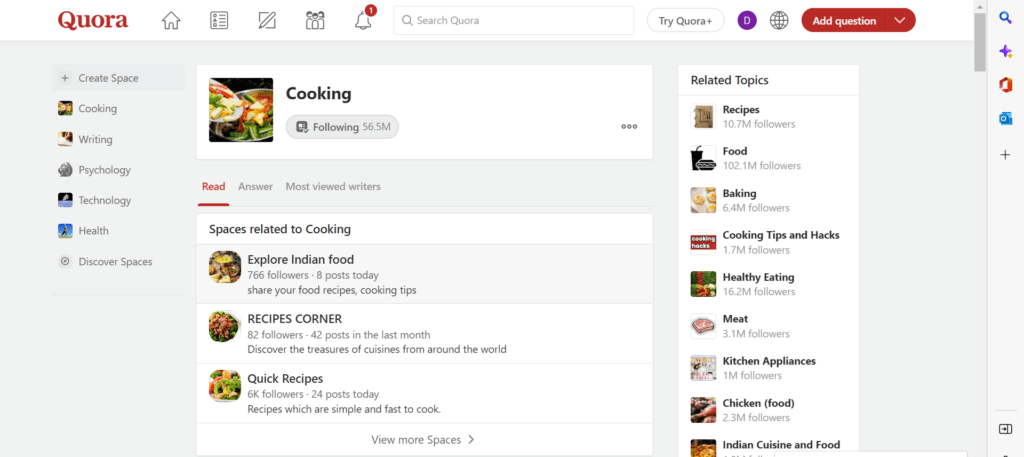
Quora has a topic page on every subject under the sun. When you go to these pages, you are presented with the most up-voted recent posts on a single page. This is a great place to gauge the kind of things that people within a particular community are interested in.
For instance, the second result on the “cooking” page features content and question about how to build lean muscle. You could spin this as “X Things You Need To Start Doing To Get That Lean Build”; back it up with some research, and you have a great story for your blog.
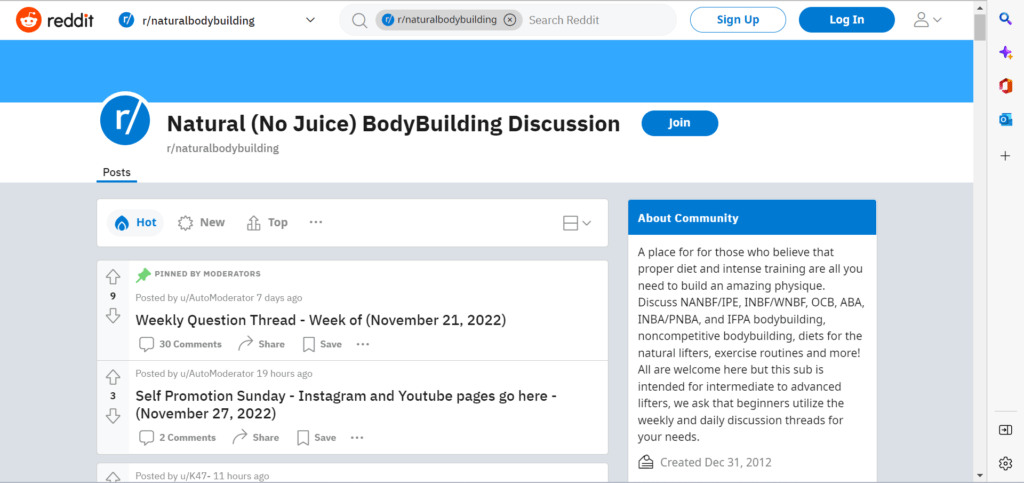
Similarly, Reddit has subreddits for all the topics that you can imagine. Within subreddits, you can browse through new, top, and controversial content and further sort them according to time.
Using these, you can better understand what kind of content gets popular among this particular audience. Apart from that, it’s also a goldmine of great links and resources that you can use to build a story. For instance, you could browse through the 20-30 most-upvoted links and then compile all the tools and services mentioned there to create a toolkit for startups.
In the end, you want your content to be shared the most, right? And how would that happen unless you know how your audience thinks and behaves?
3. Sharpen Your Hook And Fish Better
Content marketing is like fishing. And by analogy, headlines are like the hook that can either reel in a reader successfully or lose them prematurely. You can create the most amazing content in the world, but it’ll never work if you can’t write a headline that grabs people’s attention and moves them to take action.

What makes websites like Listverse, Cracked, and Buzzfeed so insanely popular? If there’s one common theme that you can see by even just a cursory glance at their content—it would probably be their propensity for list-based stories. And there’s a good reason for this.
According to research conducted by Buzzsumo, lists are the king when it comes to headlines, followed by posts that answer the question of why, what, and how-to posts. So be sure to write catchy headlines, so that you can instantly grab the attention of the audience and drive traffic to your website.
There are also a couple of handy tools that you can use to test and improve your headlines:
(a) Emotional Marketing Value Headline Analyzer
A free tool will analyze your headline to determine the Emotional Marketing Value (EMV) score. As you know, reaching your customers in an deep and emotional way is a key to successful copywriting, and your headline is unquestionably the most important piece of copy you use to reach prospects.
To test, I entered the headline of this post. Here’s the result.

“This score indicates that your headline has a total of 37.50% Emotional Marketing Value (EMV) Words. To put that in perspective, the English language contains approximately 20% EMV words.
And for comparison, most professional copywriters’ headlines will have 30%-40% EMV Words in their headlines, while the most gifted copywriters will have 50%-75% EMV words in headlines.”
A perfect score would be 100%, but that is rare unless your headline is less than five words.”
(b) Headline Analyzer from CoSchedule
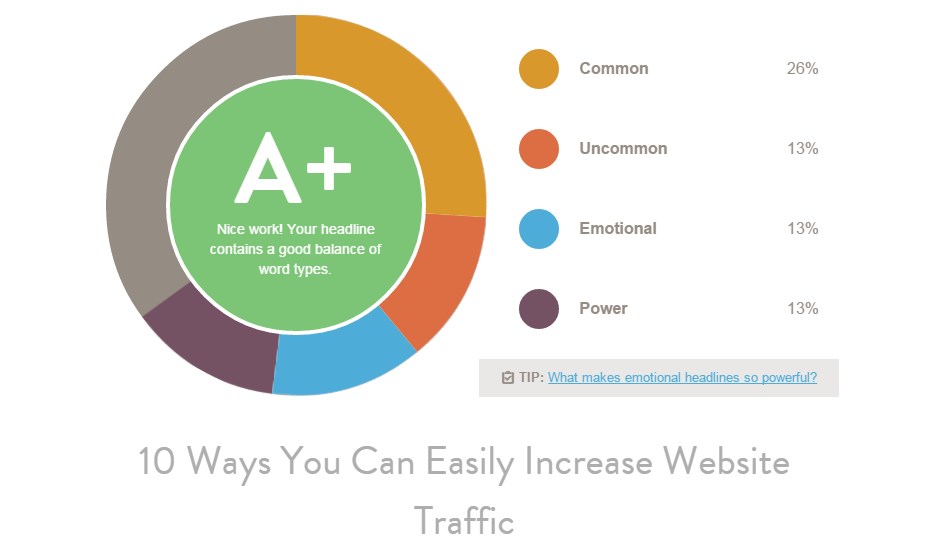
Some headline types get more traction than others for social shares, traffic, and search engine ranking. The right amount of words—and characters—can make all the difference in how your audience reads your headlines. And that can dramatically impact click-throughs to read your content. Research proves that readers share emotional and positive headlines with their social networks.
Headline Analyzers helps you write captivating headlines that your audience will share by suggesting small changes that have a big impact.
4. If It’s Not Strong, It’s Wrong
Sure, humans are rational beings, but more than that, humans are emotional beings. We do so many things because our emotions often drive us to do them without even realizing it. This is why sales techniques and free giveaways are so hot with marketers; they activate the reward centers in the consumers’ minds and make the product seem dramatically more attractive. It’s one of the well-known traffic advice in the digital marketing realm.
The same thing applies online as well. In a research titled, “What Makes Content Go Viral?”, two University of Pennsylvania professors studied 7,000 NYT articles to discover the factors that contribute to higher sharing of content. They found that articles that inspire anger, awe or anxiety in readers gets shared more than, let’s say, those that inspire sadness.
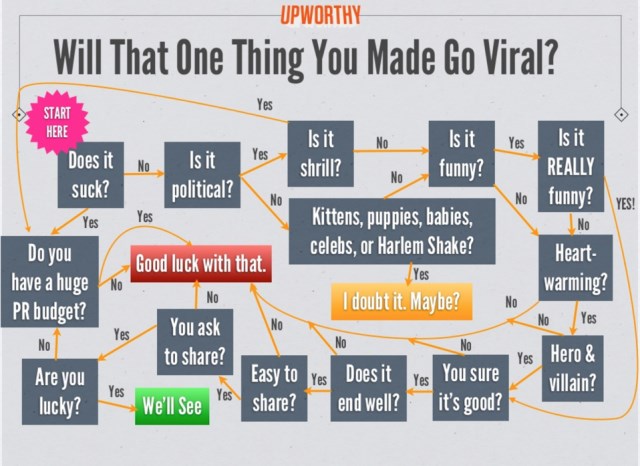
If you want an example of a website that’s turned emotion-driven content sharing into almost an art form, look no further than Upworthy. The modus operandi is simple—use attention-grabbing headlines to repackage meaningful videos, pictures, and stories. But they do it well. They do it so well, in fact, that they now receive over 27 million unique visitors a month. That’s the power of shock and awe.
Create content that surprises, informs, inspires, uplifts, and motivates your readers. Occasionally, you can even risk pushing their buttons for the right cause and playing on their fear of missing out on something. But please never bore them or make them sad.
If you’re going to remember one thing, remember this: Positive emotions work better than negative emotions, and strong emotions outperform weaker emotions.
5. Stop Running Around, Let Them Find You
At the time of writing this, about 50% of all the traffic that this blog has ever received came from search engines, with the remaining 50% coming from direct, referral, social, email, and other sources. This is a source of traffic too big to ignore. Optimizing your content for search engines takes little effort and if done right, yields sustainable results over time.
Unfortunately, beginners and people outside the industry tend to see SEO as some sort of cheap trick where you stuff keywords on a page in the hope that it will somehow make the post more attractive in the eyes of the search engine. This is not so. It’s much more than that.
The first step while writing search optimized content is doing a thorough keyword analysis. There are quite a few tools that can help you get this done, but here we’ll focus on the few that are most effective.
Keyword Tool helps you use Google Autocomplete for keyword research. It extracts Google suggestions and presents them to you in a convenient form. To generate long-tail keyword suggestions, Keyword Tool prepends and appends the term, that you specify with different letters and numbers.
Wait, hang on! What are long-tail keywords? And why should you focus on them? Here’s how the guys at Yoast describe it:
“The longer (and more specific) search terms are, the easier it will be to rank on the term. Keywords that are more specific (and often longer) are usually referred to as long tail search terms. Long tail keywords are more specific and less common. They focus more on a niche.
It’s much easier to rank for long tail keywords than for more common keywords. Another benefit for focussing on long tail keywords is that, although these keywords are used less in search, the visitor that finds your website using them is more likely to buy your service or product.”
Once you’ve selected the keywords you’d like to create content for, now it’s time to test them for competition. And there’s no better tool for this than Google’s Keyword Planner. You can get search volume for a list of keywords that you can either enter manually or using a CSV file.
Keyword Planner will now give you the estimated monthly search traffic that each of these keywords receives. It may be difficult to rank on something that’s heavily searched, at the same time, anything that receives less than 500 searches a month may not be worth your time.
Choose keywords that have search traffic between 500 to 5000 searches, then try different headlines in Google with those keywords, if you come across a result that doesn’t have too many authoritative posts listed on the first page of search—you should write it.
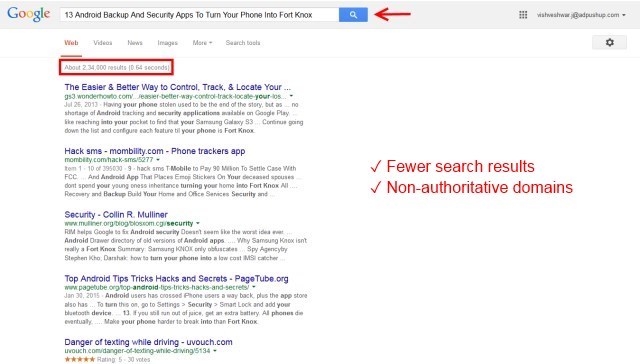
Now that you’re done with the planning, it’s time for on-page SEO optimization. Thankfully, there are multiple plugins now that do a great job of helping you optimize your post for search engines. Most of them work have a check-list that prompts you to ensure certain specific things such as set a focus keyword, write a meta description, and include the keyword in multiple places before you hit publish to ensure that your post is optimized for that particular keyword. Few of the most highly-rated WordPress plugins are WordPress SEO by Yoast, All in One SEO Pack, and SEO Ultimate.
6. Everybody Loves A Good Guest
Guest blogging is an effective way to increase website traffic, though it might take some time to see results. When you’re just starting out on your website or blog, it may be difficult to attract users via organic channels, no matter how good the quality of your content is. This is because search engines consider factors like how old the domain is. Also, how much content the website has in total in its ranking algorithm, amongst other factors. Other than paying for traffic, there’s little you can do to remedy this.
A great way to get your blog started off on the right foot is by guest posting on other popular blogs that are related to yours. This will not only generate interest in your own blog but also help you get a feel for the blogging community that you’re seeking to enter. Once you’ve built up a rapport with other bloggers, you can then allow them to guest post on your blog – giving both of your blogs a great boost in traffic.
The popular social media scheduling app Buffer relied heavily on guest posting as part of its initial promotion strategy. Eventually, they acquired up to 100,000 users just from it and established themselves as one of the industry’s leading blogs in the process. Here’s what Leo Widrich, the co-founder of Buffer, said –
“We have built an internal analytics dashboard that would show us how many signups we are getting every day and where they are coming from. There was nothing else we did, literally. Just guest blogging.”
A more recent example is when Alex Turnbull, CEO and founder of Groove, explained how guest blogging across other popular blogs such as Buffer, KISSmetrics, OnStartups, and AngelHack helped them reach over 1 million people:
“There’s no faster or cheaper way to reach massive audiences than guest blogging. By leveraging existing audiences in a way that delivers value, you create opportunities for exponential growth.”
You must be wondering why anyone would accept my guest post when no one even knows me? Well, start small. Instead of reaching out to the big guys right at the start, go ahead and pitch great stories to smaller blogs first.
You can start with a simple cold email. Just be sure to follow some cold email strategies and best practices.
Once you have a few published blog posts under your belt, pitch to bigger, more established blogs and show them where you’ve been published before. It often works as a rite of passage where bloggers become more receptive to your pitches when they know that your posts have already been accepted and published elsewhere.
7. Create A Few Things For Posterity
Look at any popular website or blog, and you’ll notice that they almost always have a few landmark posts that as meticulously researched and brilliantly written. Basically, the posts that are clearly a cut above the rest. These posts usually go on to become authority pieces in their concerned subjects that other people love to link to—thereby increasing their value as time goes by.
Some people like to call this “evergreen” content, which as the name suggests, is something largely immune to the passing of time because of the way that content is created. The Beginner’s Guide to SEO from Moz is an excellent example of evergreen content.
For comparison, consider this: A post such as “Top 10 Celebrity Moments at the Oscars 2015” will see heightened reader interest during a specific, brief period of time before it becomes irrelevant. Now compare this with something like, “100 Most Gripping Crime Drama Movies Ever Made,” and you’ll instantly notice the appeal and longevity of the latter. Sure, it takes more effort to create such content, but it yields better returns in terms of user interest, in the long run.
Apart from just user interest, longer posts also have an SEO advantage, as explained in this post on the serpIQ blog. The highest-ranking websites had more content on average than websites that were ranked lower in search, with the sweet spot being somewhere around 2,450 words per post.
Chris Fielden of Moz says that these are the things that you need to do in order to create and maintain a successful and valuable evergreen post:
- Find something your target audience wants
- Give it to them
- Keep the content fresh with regular updates and improvements
- Listen to user suggestions and make changes accordingly
- Listen to user suggestions about other resources they might find useful, and create them
8. Stop Shooting In The Dark
When you play dart, do you ever just aim it towards the roof and then expect it to magically hit the board? Not really, right? So why would you want to do that with content? Kristina Halvorson, author of the book Content Strategy For The Web, defines content strategist as a person who defines not only which content will be published but also why it is published in the first place.
If you want more traffic or more sales or really more anything on the web, you have to put on your content strategist hat and start thinking about the what, why, who, and how of every piece of content that you create, lest it all be in vain. So think about:
- What you’re creating.
- Why you’re creating it.
- Who you’re creating it for.
- How will you promote it.
Obviously, this is a bit of an oversimplification, as getting into too much detail about content strategy is beyond the scope of this post, but here’s an expansive guide on content strategy from the Content Marketing Institute if you’re serious about making your content efforts count.
If content strategy is the information inside a book, design is the cover that everyone judges it by. A bad design experience can single-handedly fail an otherwise good website. With technologies like HTML5 and CSS3, today’s responsive designs are a far cry from those used just a few years ago. So whether your website is new or if it’s been around a while, it could probably do with a facelift if you haven’t given it one yet.
Obviously, the quality of what you get depends entirely on how much you’re willing to spend, but the two broad options are to either get a custom design or use a pre-designed template.
If you’re looking for something bespoke and don’t mind loosening your purse strings, you could have freelance web designers or professional design agencies to create something specific to your brief. If you’re looking for pre-designed templates, online marketplaces such as ThemeForest and Template Monster have you covered.
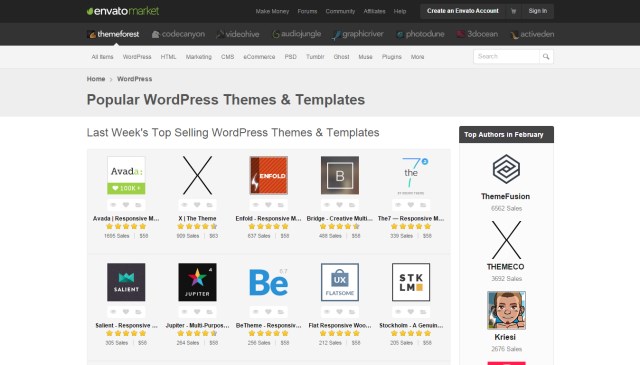
Lastly, remember that the devil is in the details. For instance, posts with social sharing buttons receive up to 7x more mentions, but paradoxically, having too many buttons can have the opposite effect. So get into a growth hacking mindset and always be on the lookout for the little changes you can make which have big results.
9. Regularly Check Website Traffic
The general rule of thumb is to check website traffic once a day to avoid getting frustrated by traffic spikes and then deliberately ignoring it for a week. The reason for checking the traffic is to understand what is working and what can be improved to increase traffic. The deeper the insight, the better the result.
When you find something that isn’t working, you can adjust it or get rid of it. When you find something that is working, you should try to improve it or do more of it. Website traffic gives you valuable feedback that can help you get more customers. More customers mean more profit, so traffic monitoring is really important.
So, which networks should you distribute your content on? And how?
(a) Email list: If you haven’t already, give people the option to subscribe to your blog updates via email. You can use services like Aweber and Mailchimp to set up your email newsletters, and if you’re looking for something simple and basic—even Feedburner will do. Offering free e-books and email courses are a great way to build your email list when you’re just starting out.
(b) Facebook: Facebook is usually the largest source of social traffic for most blogs and websites. And although it now charges money to promote your content, there are still open and closed groups for specific communities where people interact on a daily basis. These are good places to promote your website, provided that you’re actually posting something of value.
(d) Twitter: Unless you already have 100,000 followers on Twitter (congratulations if you do), just throwing a tweet out there about your new post isn’t going to really break the internet. Instead, try to think of Twitter as a medium to reach the right people and somehow get them on your side. Having a influencer retweet your tweet has a multiplier effect. Other than this, you should also regularly re-post older content from your blog on Twitter, with slightly altered headlines each time, this helps you get more out of the same content, and increases readership by reaching those who may have missed it the first time.
(e) Discovery and bookmarking sites: Websites like Pinterest, StumbleUpon, Digg, and Delicious allow users to bookmark, discover, and share interesting content across many different subjects ranging from astronomy to fashion. Whenever you create something new, be sure to submit it to these websites so that your content has higher chances of being discovered by users online. Here are 50 more such websites.
(f) Communities: Online communities like subreddits in Reddit, Triberr, Inbound.org, GrowthHackers, Google+ communities, LinkedIn groups, Hacker News, and others are great places to reach a large number of people, but you have to be careful.
Blatant peddling of your own brand is almost universally frowned upon and on moderated communities such as Reddit, it can even lead to bans.
To avoid this, always aim to post the right content in the right community, so for instance, don’t post cat gifs in r/startups (no matter how good the gifs).
(g) Directories: Blog directories such as Alltop and Technorati can help new blogs gain audience, get more targeted traffic, and generate high-quality backlinks. Here’s a list of 131+ such blog directories you can submit your blog to.
Can you automate this and make it less tedious? Yes! Once you have these basics in place, you should move on to scheduling your content distribution by using services such as the Buffer App and even further simplify the process for yourself by using task automation apps such as IFTTT and Zapier.
10. Don’t Be A Rookie, Get Expert Help
In the beginning, when you’re still in process of establishing your own online presence, it pays to be noticed by or be seen associating with industry experts. It helps build your credibility and join the conversation. And by this, I don’t mean sending people unsolicited LinkedIn request asking them to do you this favour and that favour. I’m talking about a symbiotic relationship where both parties stand to gain something from each other.
The reason this is the last point in this post is because, ideally, your blog should have its basics in place and be appealing enough for someone to consider associating with before you go around pitching. Here are a few ideas how you can use the influence of others to your advantage:
Round-ups: Pick a subject that matters deeply to a certain category of people, for instance, revenue matters to publishers, and nutrition matters to fitness freaks. Now make a list of people who talk extensively about said subjects and are widely seen as experts in their fields.
Once you’ve done that, it’s time to frame your concept. “We Asked 15 Top Bloggers What You Can Do To Increase Ad Revenue In 2015, Here’s What They Said” and “10 Fitness Experts Weigh In On The Cardio Vs. Weights Debate” are examples of story concepts.
Lastly, start emailing the experts on the list you made explaining your story concept, eliciting their response. Though you won’t have a 100% response rate, with some luck, you should have enough material for a stellar post.
Quote posts: This is similar to round-ups, except instead of asking the experts for responses, you search for what they’ve already said or written previously about a particular subject, and compile the list in one post. Once you have published the story, send all the experts that you’ve quoted a brief email stating that you have quoted something they said in a post and would love it if they could share it on their social networks. In most cases (it may take follow-ups), people oblige.
Interviews: Last but definitely not the least, conduct interesting interviews. A couple of formats are always a hit with people such as success stories and tell all interviews. Great interviews always have universal themes with multiple takeaways that readers can apply to their own life situation, or at least be inspired by, which increases its sharability. An interview that gets too specific may hold very strong interest for a few, but it probably won’t get you huge traffic.
You get the traffic. They get to bolster their expert image. It’s a win-win for both.
What are some things that you’ve done that have helped you increase website traffic?
FAQs
Social media strategies can help you connect with new users, develop brand awareness, and drive organic traffic. However, it is important to remember that there is no silver bullet when it comes to website traffic.
To figure out how to drive traffic to your website, you’ll need to experiment with different techniques and find what works best. Some more common ways to increase website traffic include optimizing your site for search engines, running advertising campaigns, etc.
There are many well known traffic advice and tactics to increase traffic out there. But not all of those pieces of advice may fit best for your marketing goals. A few ways to increase website traffic include guest blogging, social media posting, and requesting user-generated content. These strategies take time, but it’s worth the effort.
If you’re confused about how to check website traffic, online tools can help. They all have unique features that make them stand out. Try SEM Ranking’s Website Traffic Checker. One click is all it takes to get website traffic statistics.

Shubham is a digital marketer with rich experience working in the advertisement technology industry. He has vast experience in the programmatic industry, driving business strategy and scaling functions including but not limited to growth and marketing, Operations, process optimization, and Sales.


